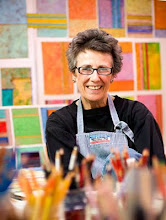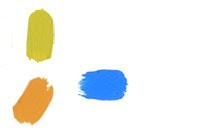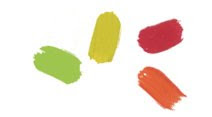I have learned about painting by looking at paintings and I learned about painting at school.
But mostly I have learned about painting by painting. In order to make paintings that meet the need that provokes the output, I have to put aside most of the rules and learning that have come from outside of myself — except for the purely technical information. It is too easy to make a painting that looks like a painting and therefore is a painting. When I was at school, there was a lot of talk, when “critiquing” a painting in progress, about depth. Paintings had to manifest an illusion of three dimensions. We didn’t need that deceit when we were in the classroom of Two Dimensional Design, nor when we were learning calligraphy.
Space was an essential consideration in the architecture classroom and the sculpture lab, and definitely to be desired in a painting. I was halfway through my life (assuming I will last until eighty or ninety), when I realized that I hated that deception. I love the flatness of a canvas or a sheet of paper. I do not want to destroy it with a mirage. I want to consider the entire rectangle, (or square, don’t like circles or triangles or any other roundish or angular shapes for paintings), and keep every bit of it looking as flat as it is to start with. I was so accustomed to envisioning object and background, or foreground, middle ground and background, that I had to struggle to see differently and work differently. That struggle is behind me now; I see and paint what I consider realism: paint and/or other media on a flat surface, no illusion of depth intended. I have no quarrel with seeing space in other painters’ work, just don’t want it in mine.
At my last show, a number of people commented on the depth they saw in my paintings. Well, what do you do? Paintings are for the eye of the beholder. I am comfortable with whatever it is that viewers bring to my work and very often surprised and enlightened.
The image above is the Nostalgia Quartet, acrylic & mixed media collage on archival board, 19.5” x 14.5” each panel, painted in 2008. For information about any of the paintings seen on this site please email Joan.

























